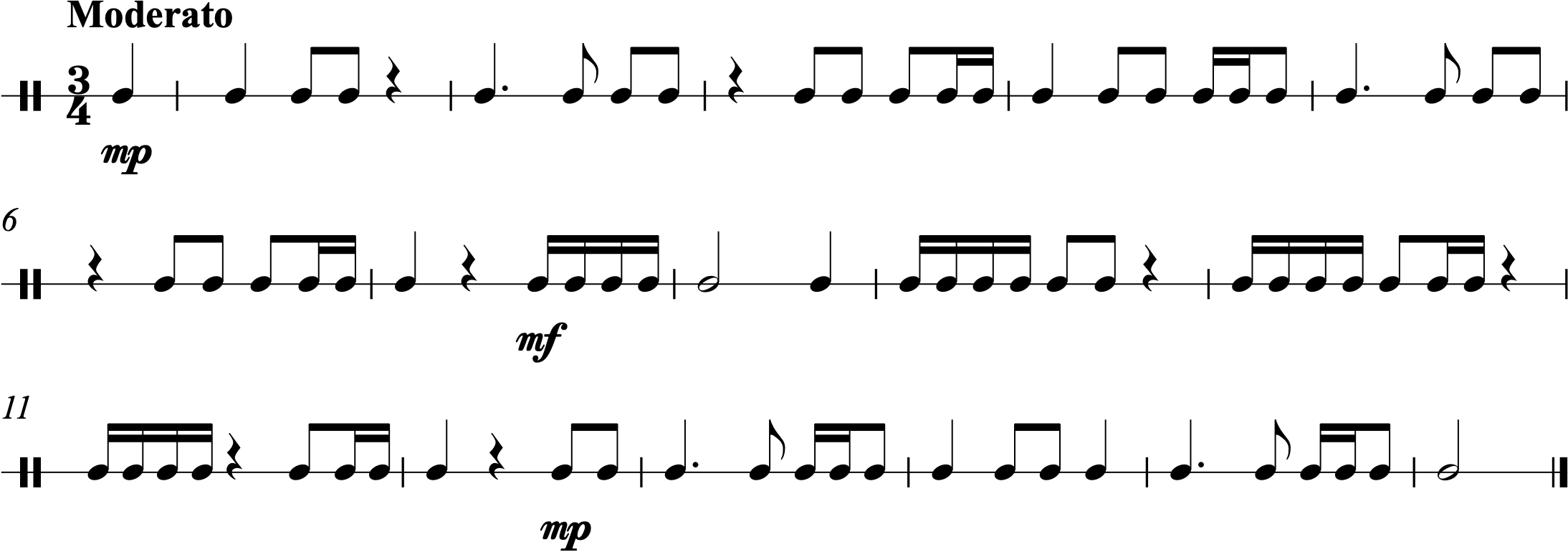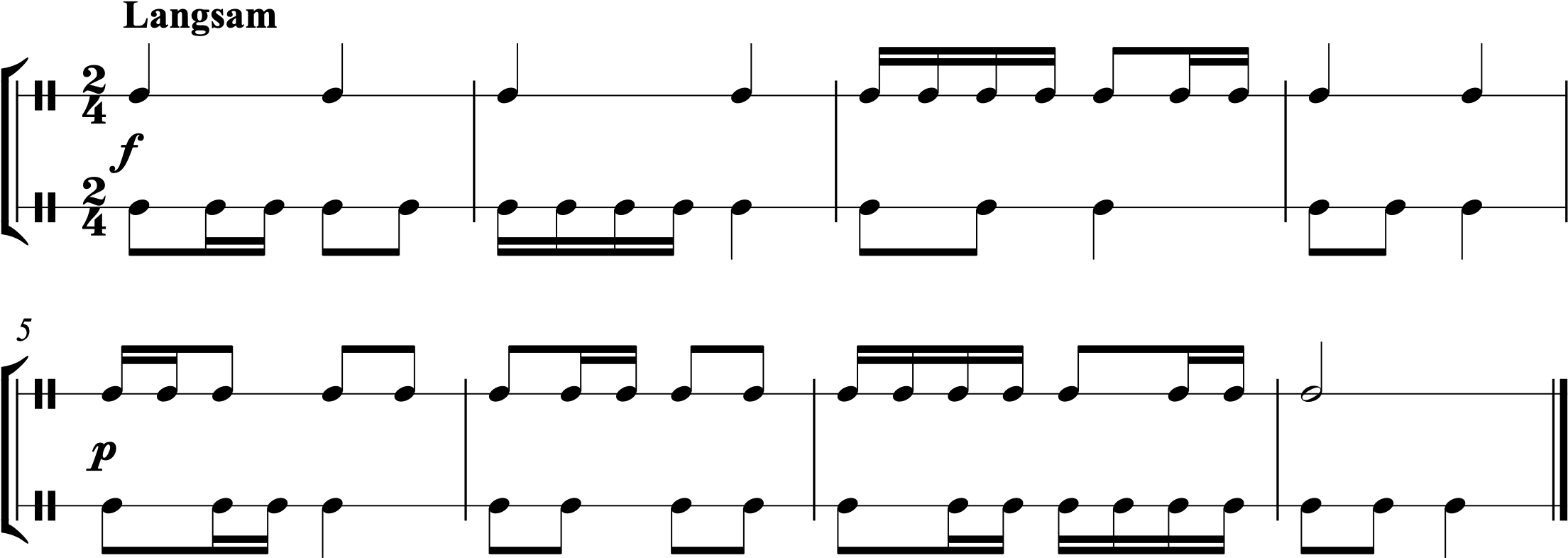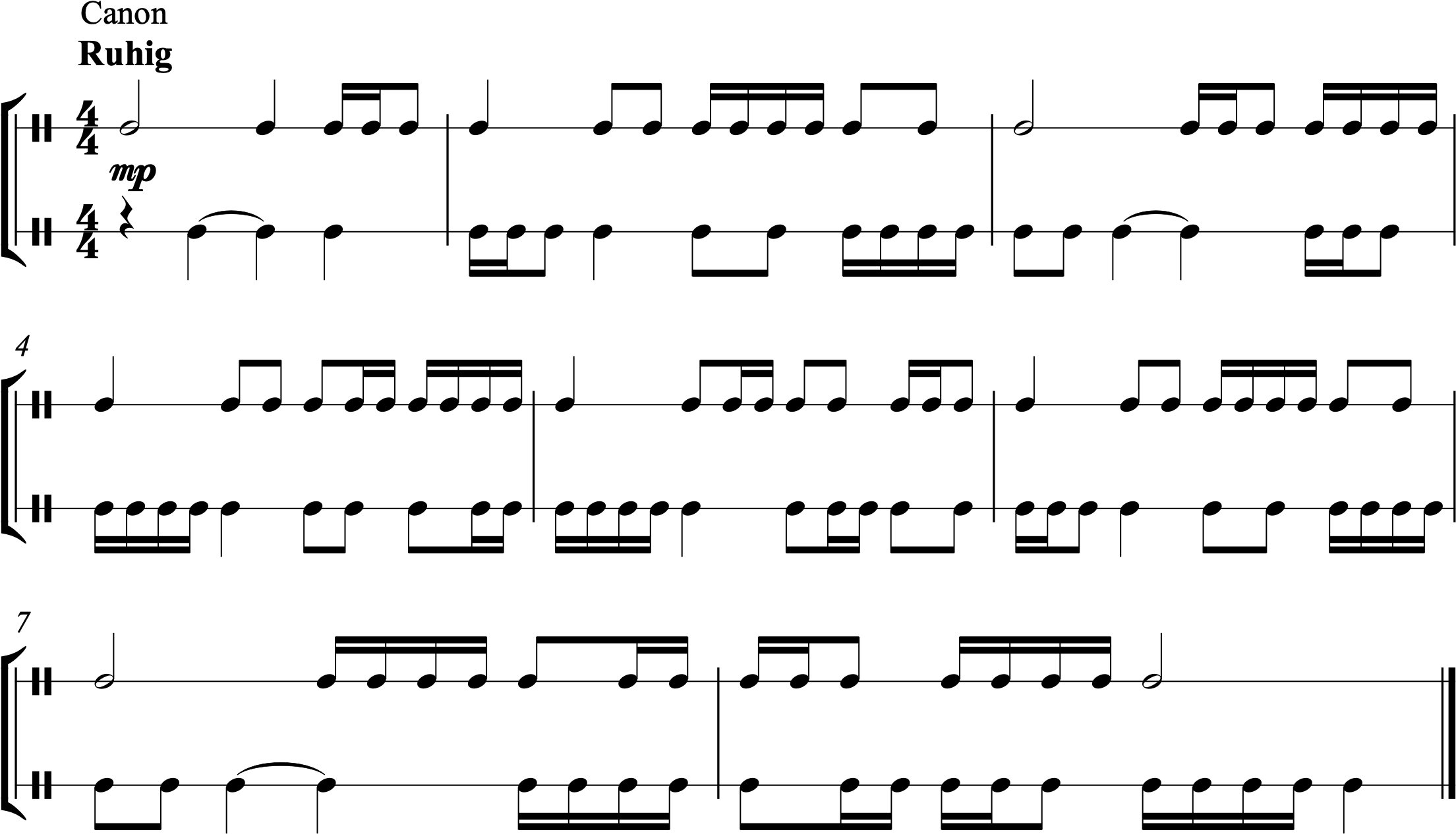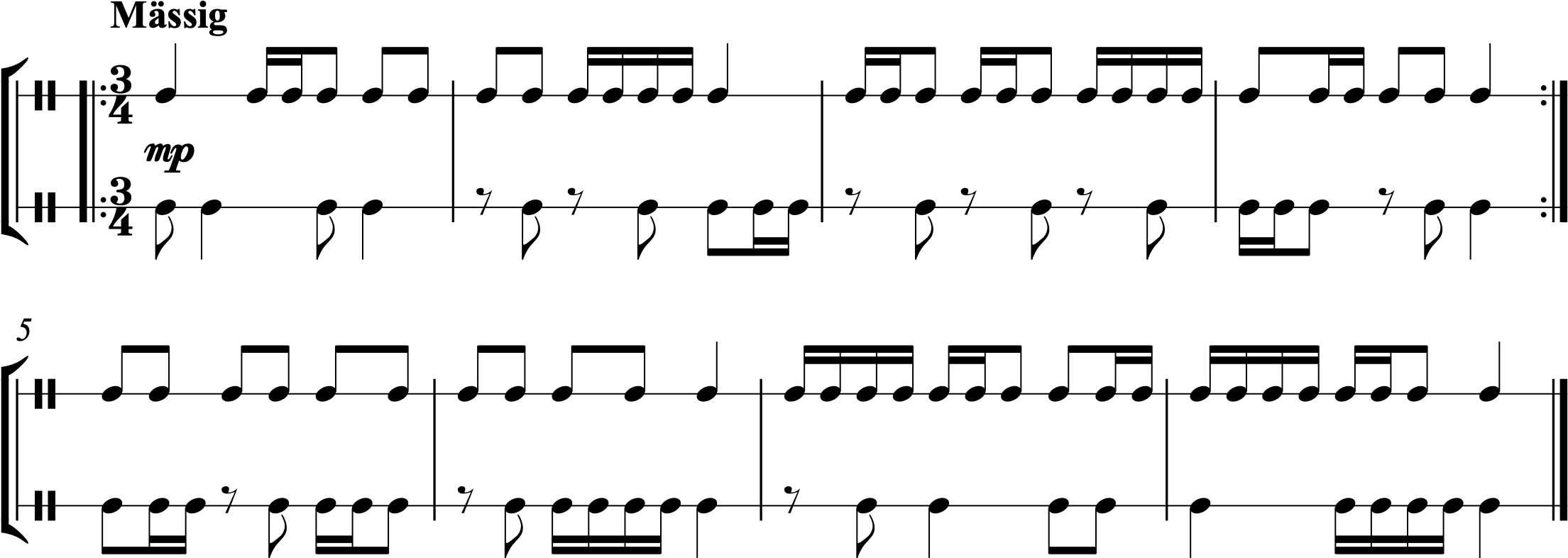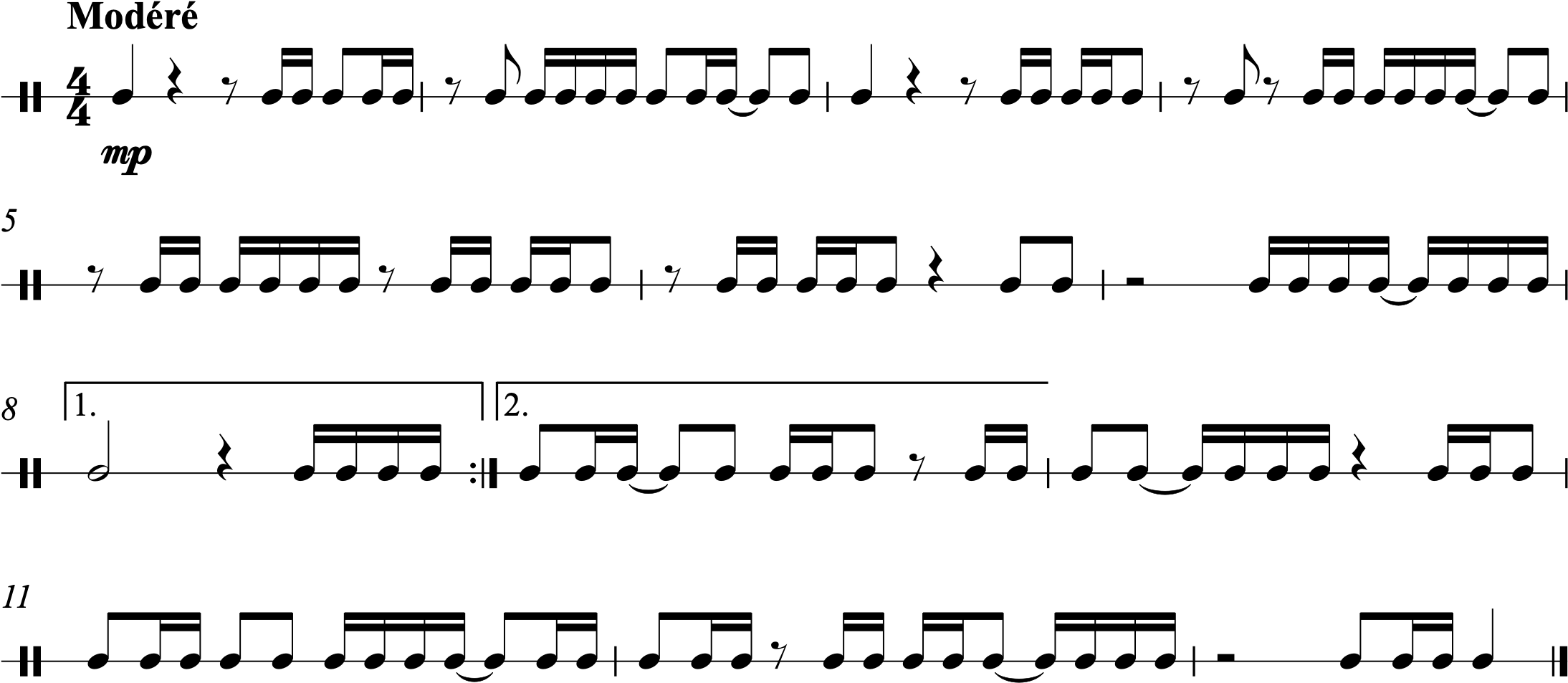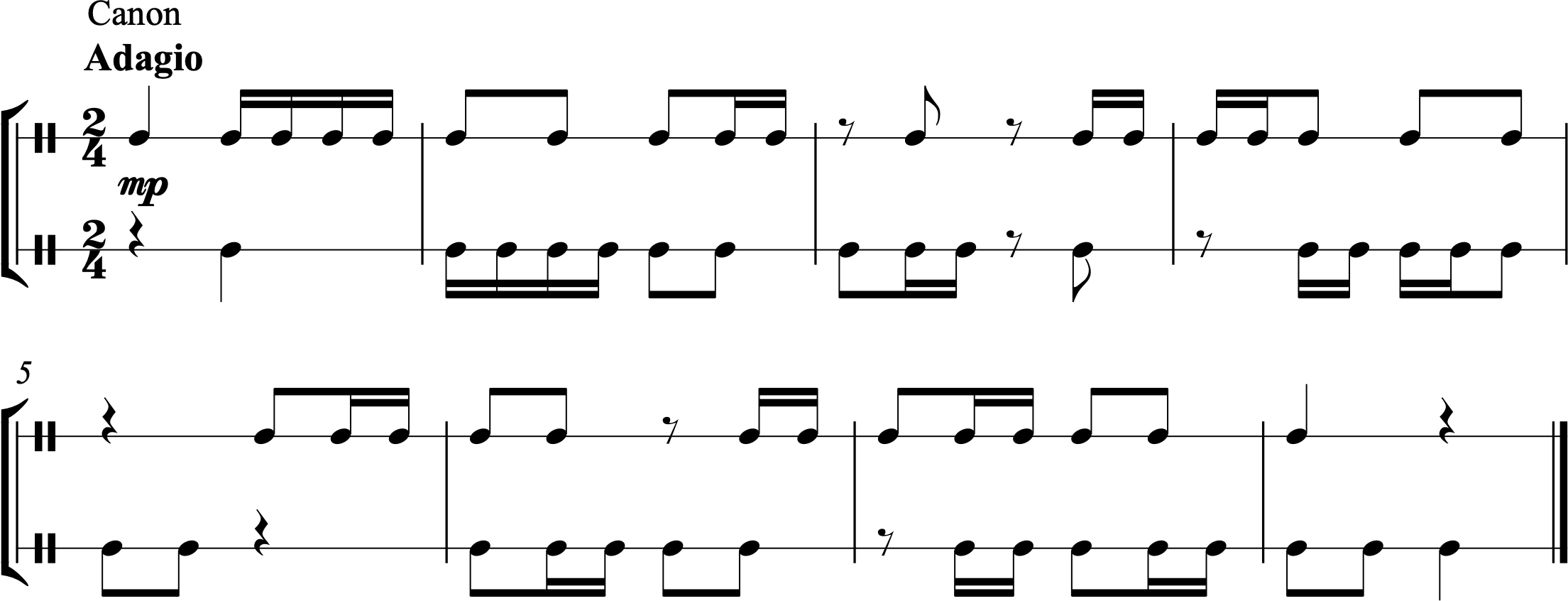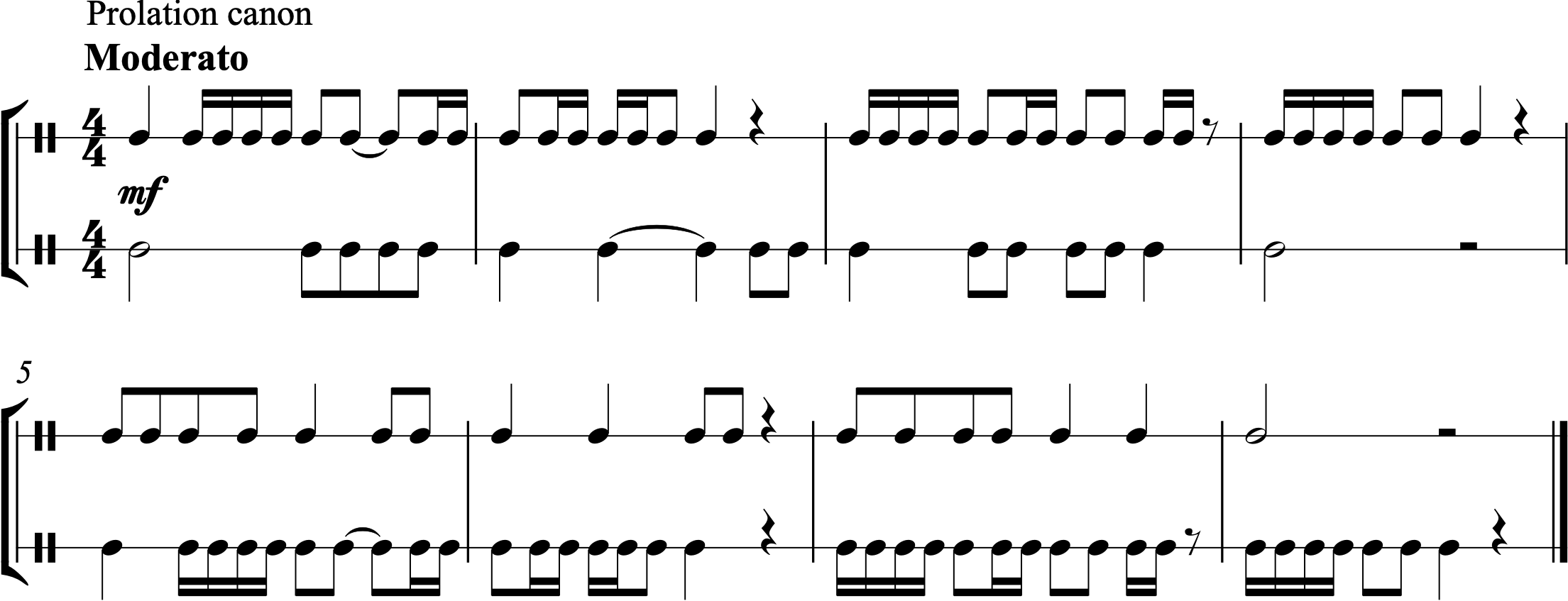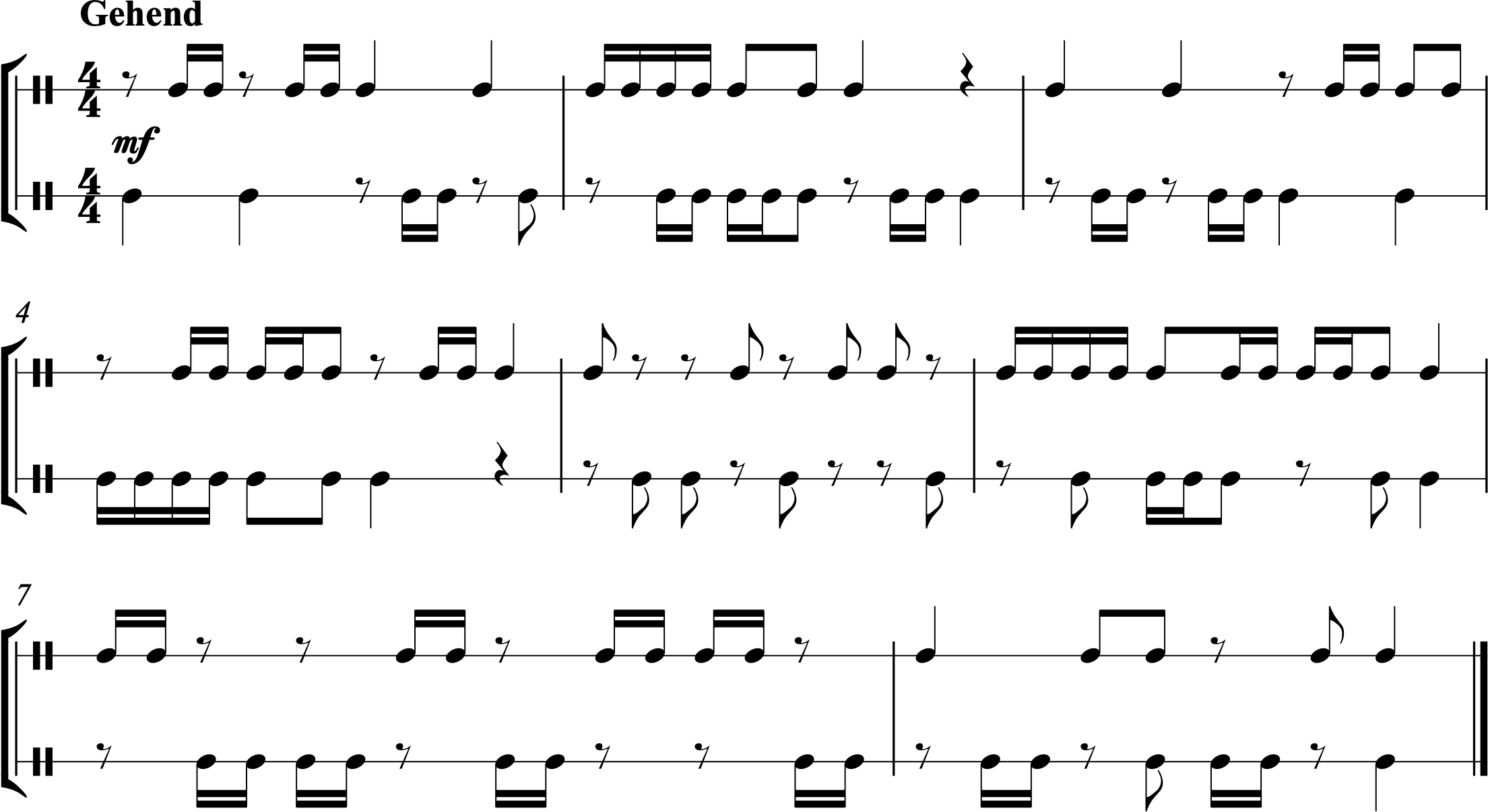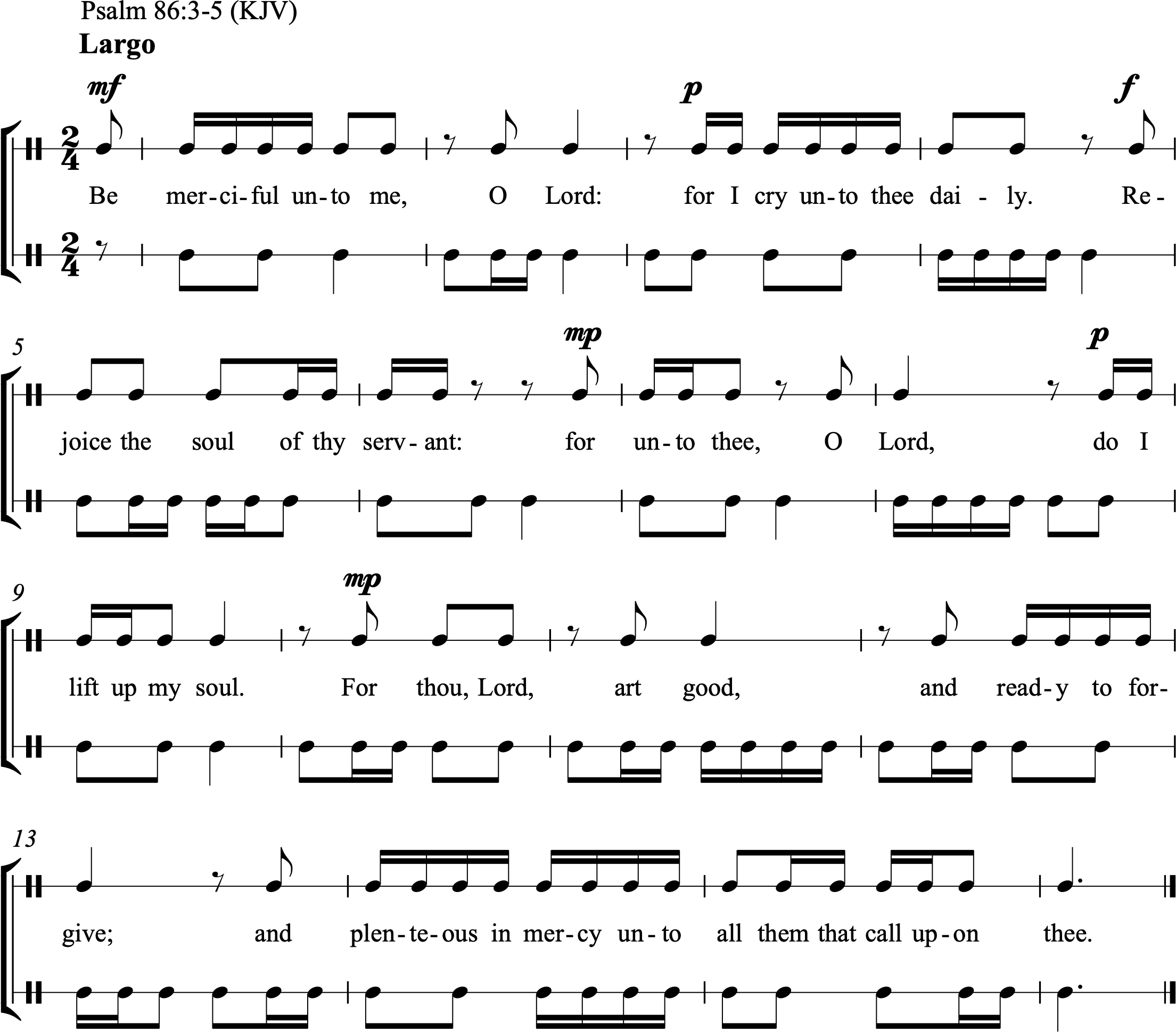Chapter 5: Simple Meter—sixteenth notes
About This Chapter
About This Chapter: In Chapter 1, simple meters were defined as meters in which the beat typically divides into two equal parts. We’ve focused so far on simple meters with the quarter note as the beat and the eighth note as the division of the beat. But we can actually further divide the division into even smaller note values (a concept we’ll return to in Chapter 15). Here, we’ll focus on what happens when we divide the eighth note divisions into two equal parts. These different metrical levels—the quarter note beat, the eighth note division, and the sixteenth note subdivision—are creating a metrical grid.
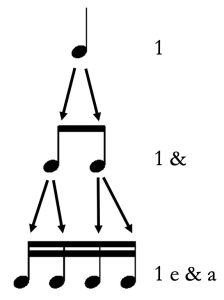 Rhythmic Syllables: Since we’re adding a new metrical level, we’ll need some new rhythmic syllables. Check out the figure below to see the syllables we’ll use. Notice that we still want any note that’s on a beat to be spoken as a number. We also still want the off-beat eighth notes to be performed as “&” (“and”). For the sixteenth notes that fall between, we’ve added some new syllables: “e” (pronounced like the letter “e”) and “a” (pronounced like “uh”).
Rhythmic Syllables: Since we’re adding a new metrical level, we’ll need some new rhythmic syllables. Check out the figure below to see the syllables we’ll use. Notice that we still want any note that’s on a beat to be spoken as a number. We also still want the off-beat eighth notes to be performed as “&” (“and”). For the sixteenth notes that fall between, we’ve added some new syllables: “e” (pronounced like the letter “e”) and “a” (pronounced like “uh”).

Section A—Eighth notes subdivided into sixteenth-note pairs
Practice
Practice A:
 Practice by performing along with this audio file, which features a metronome click and the notated rhythm. You will hear one measure of wood block to establish the tempo before the exercise begins.
Practice by performing along with this audio file, which features a metronome click and the notated rhythm. You will hear one measure of wood block to establish the tempo before the exercise begins.
Next, try performing along with this audio file, which features the notated rhythm but no metronome click. You will hear one measure of wood block to establish the tempo before the exercise begins.
1.
2.
3.
4.
5.
6.
7.
8.
9.
10.
11.
Section B—Two-part rhythms featuring eighth notes subdivided into sixteenth-note pairs
12.
13.
14.
15.
16.
17.
Section C—Other sixteenth-note combinations
Practice
Practice C:
 Practice by performing along with this audio file, which features a metronome click and the notated rhythm. You will hear one measure of wood block to establish the tempo before the exercise begins.
Practice by performing along with this audio file, which features a metronome click and the notated rhythm. You will hear one measure of wood block to establish the tempo before the exercise begins.
Next, try performing along with this audio file, which features the notated rhythm but no metronome click. You will hear one measure of wood block to establish the tempo before the exercise begins.
18.
19.
20.
21.
22.
23.
24.
25.
26.
27.
28.
29.
30.
31.
32.
33.
34.
Section D—Two-part rhythms featuring other sixteenth-note combinations
35.
36.
37.
38.
39.
40.
41.
Rhythmic Cells
- For general suggestions on how to use these rhythmic cells, see Appendix: How to Use Rhythmic Cells.
Rhythm in Context
Rhythm in Context example coming soon!
Citations
Poem:
- Lope de Vega (1562–1635), “Tomorrow,” public domain. From Hispanic Anthology: Poems Translated from the Spanish by English and North American Poets, published 1920, G. P. Putnam’s Sons, New York, NY.
Psalm:
- Scripture taken from the KJV, 1987, public domain.
Rhythm in Context:









